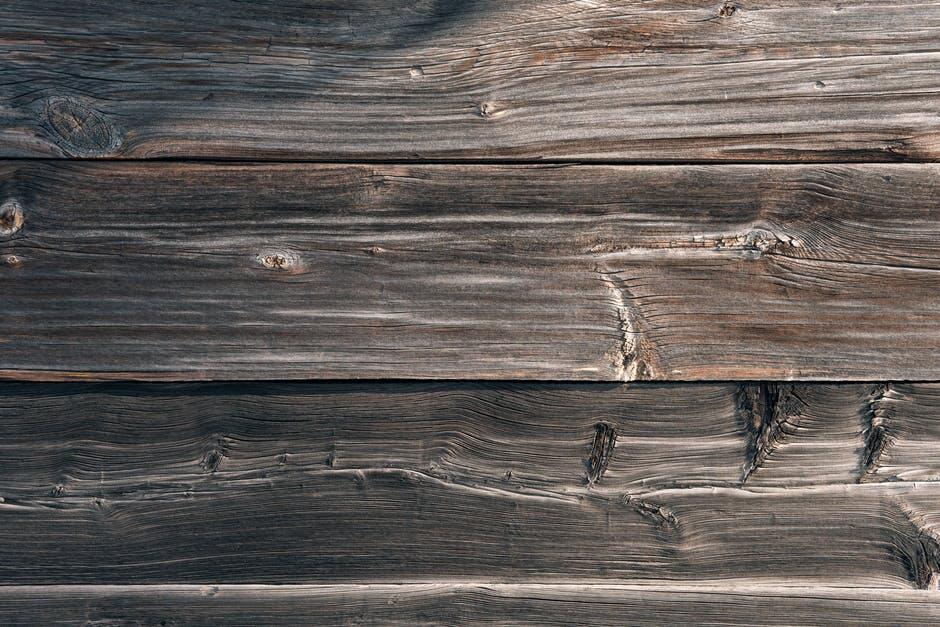Whether it’s a result of a broken pipe, a leaking roof, or a faulty appliance, water is a sneaky culprit that can cause damage, discoloration, and distortion of your wood features. It’s important to recognize the signs of water damage before it wreaks havoc on your most treasured assets.
If you’re one of the 14 thousand Americans affected by water damage each day, you’ve come to the right place. Take immediate action and discover how to salvage your water-damaged wood with this helpful guide.
Signs of Water Damage
From wood furniture to hardwood flooring, this organic and porous material is often vulnerable to moisture exposure. While water damage frequently goes undetected, there are some warning signs to watch out for. Some distinct signs of water damage include the following:
- Rot or mold growth
- Cracked or splitting wood
- Signs of rusting
- Musty odor
- Bubbling or peeling paint
- Changes in texture
- Swelling or separation
- Soft or soggy wood
- Discolored or stained wood
- Warping or buckling
It’s critical to act quickly if any of these warning signs occur. Damaged wood can cause injury and create long-term health issues, so identifying the source of the problem will help you address your restoration in time to save your wood features.
Causes of Water Damage
Excessive moisture exposure can lead to the absorption, expansion, and contraction of wood, resulting in structural instability. The following are some of the most common causes of water damage:
Plumbing Issues
Whether it’s a dripping faucet, leaking shower, running toilet, or clogged drains, faulty plumbing can cause your wood to become saturated. This can lead to rotting, warping, and discoloration.
Appliance Malfunctions
Damage can be severe if a water line from your dishwasher, refrigerator, washing machine, or water heater leaks. What begins as a slow trickle can quickly become a full-blown puddle due to a defective gasket, seal, or latch.
Broken Pipes and Hoses
The severity of a damaged water hose or leaky pipe can rapidly escalate from moderate to severe. Low-quality water erodes pipelines and loosens pipe fittings. Age and regular wear and tear can also cause damage.
HVAC Units
Water damage is frequently caused by your HVAC unit. Poor ventilation, improper maintenance, and moisture buildup can result in high levels of humidity and condensation on wooden surfaces. This eventually causes them to distort and decay if not addressed.
Natural Disasters
Extreme weather events like hurricanes, thunderstorms, and river overflows can cause unexpected water damage. Wooden parts of your property, both interior and exterior, are particularly vulnerable to subsequent flood damage.
How to Assess Water-Damaged Wood
Water damage can range from minor to severe. While some issues can be managed on your own, other cases may require professional assistance. By assessing the extent of the water damage, you can determine the best course of action. Here are some signs and causes of damage to look for:
Buckling or Warping
Check your wood floorboards for signs of buckling or warping. High moisture levels or harsh weather conditions can cause wood floors to expand or contract. This can distort their shape and cause the surface to appear uneven.
Staining or Discoloration
Dark, brown, or yellow patches are common signs of water damage. Discolored wood is usually the result of an undetected leak in the roof or walls, which allows water to penetrate the wood fibers.
Mold or Mildew
Mold thrives in damp, humid environments such as attics, bathrooms, and crawl spaces. Green or black spots on the surface are common signs of degraded wood. Mold growth and musty odors suggest prolonged water exposure.
What to Do When Water Damage Occurs
Because wood spreads and absorbs water rapidly, acting swiftly can lessen the impact and increase the chances of a successful restoration. When water damage happens, here are some critical steps to take:
Find the Source
Finding the cause of the water damage is an important first step. This can involve shutting off the main water supply or sealing the water leak with tape or epoxy. If the damage is significant, you should contact a professional plumber right away.
Remove the Water
Immediately wipe up any spills or standing water from your wood floors with a towel, microfiber mop, or a wet-and-dry vacuum. You should also remove any damp furniture or rugs to further stop water from penetrating the wood’s joints.
Dry the Area
Even after removing excess or stagnant water, there’s a good chance that moisture is still lingering beneath the surface. Thoroughly dry the affected area by opening windows, turning on fans, or using dehumidifiers to increase air circulation and speed up the drying process.
How to Prevent Water Damage
You can lower the chances of future water damage by taking preventive measures. First, make sure to keep your wooden furniture away from moist environments like sinks, bathtubs, windows, doors, and HVAC units.
Waterproof fixtures, insulated windows, exhaust fans, and a high-quality wood sealant can also reduce the possibility of water seepage. Safeguarding outdoor wooden items from extreme weather conditions and excess moisture will also help extend the wood’s longevity.
Lastly, regular roof and plumbing inspections will help you catch leaks early, avoid unexpected repairs, and ensure a safer environment.
Why You Should Hire a Professional
Neglected water damage can lead to structural damage, health issues, safety hazards, property devaluation, and costly repairs. With so much at stake and the intricacies involved, it’s recommended to hire a professional inspector to fix your water damage.
Hiring an experienced specialist ensures the safe, reliable, and efficient restoration of your property. From mold inspections to air quality evaluations, you can have peace of mind knowing that your home is in competent hands.
Road to Restoration
Your property is a valuable asset, and water deterioration on your precious wood can be devastating. But don’t worry! From surface damage to structural deterioration, we’re here to breathe life back into the integrity of your wood.
Our priority is to assess, prepare, and restore your water-damaged wood. Check us out at Elite Mold Services today to ensure that your wood features last for years to come.

